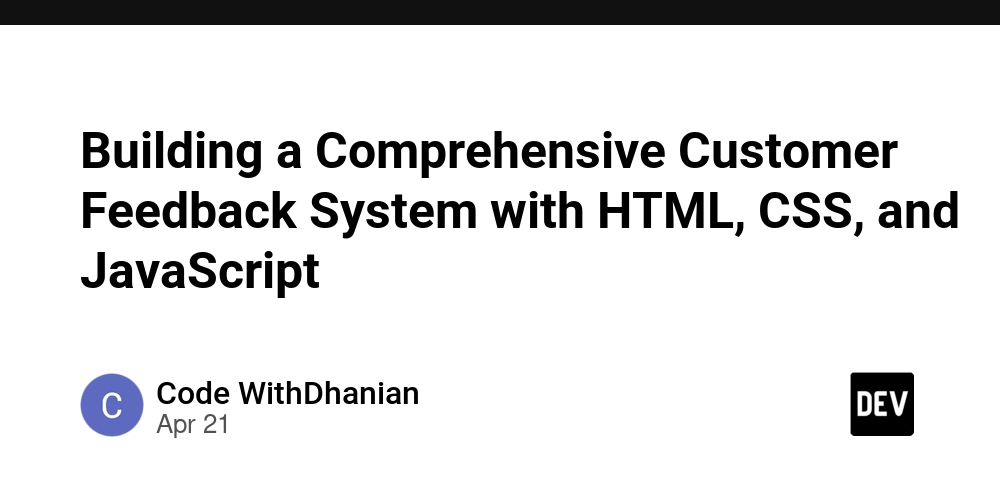Integrating Agile in the Age of AI: Common Pitfalls and Solutions
Agile. We all say we do it, but are we really? If your standups feel like status updates, your retros get ignored, and your sprints feel like a death march, you might be doing Agile wrong. And with AI accelerating development, these problems are only getting worse.According to the 17th Annual State of Agile Report, 71% of survey takers say they practice Agile, with 61% using Scrum. And now, with AI, 30% of Agile practitioners are exploring the usage of LLMs and AI-powered coding tools, creating even more complexity in Agile workflows. The question is whether teams are adapting their Agile processes to account for AI, or if they’re simply allowing it to amplify existing dysfunctions. The Current State of AgileA lot of teams treat Agile as a checklist—daily standups, sprints, Jira tickets—but forget the core principle is adaptability. Agile is about responding to change, not following a set process. Now, with AI-assisted coding, automation, and AI-driven decision-making, the challenge isn’t just moving fast but ensuring AI-generated output aligns with real business value.We see AI tools like GitHub Copilot, Codeium—and even predictive analytics in sprint planning—speeding up development, but faster doesn’t always mean better. If we aren’t careful, AI can amplify Agile dysfunctions instead of solving them. Common Pitfalls and SolutionsTreating Stand-Ups as Status MeetingsProblem: Many teams fall into the trap of using stand-ups as simple reporting meetings—each team member listing what they did yesterday, what they’ll do today, and whether they have blockers. With AI-generated progress updates now automating status reports, some teams think stand-ups are unnecessary. But AI can’t replace real conversations about team collaboration and problem-solving.Solution: Instead of treating stand-ups as an update meeting, focus on collaboration and problem-solving. Discuss dependencies, blockers, and whether the AI-generated work actually solves the intended problem. If AI is producing code, is it high quality? Are there hidden risks? Are we aligning with customer needs? These are the discussions that matter.Sprint Planning as a Commitment, Not a ForecastProblem: AI accelerates code generation, and that’s exciting. But it also increases unpredictability. Some teams assume that since AI helps write code, they can fit more work into a sprint. This leads to overcommitting, assuming AI will speed things up, but forgetting that reviewing, debugging, and integrating AI-generated code still takes significant effort.Solution: Sprint planning should be a forecast, not a rigid contract. AI can provide estimates based on past work, but it doesn’t account for unexpected complexities, refactoring needs, or integration challenges. Teams should use AI as an assistant, not a dictator—continuously refining estimates based on real progress rather than blindly trusting AI-driven predictions.Ignoring Retrospectives (While AI is Changing Your Workflow)Problem: Teams often rush through retrospectives—or worse, skip them entirely—because they don’t see immediate value. In an AI-driven world, this is even more dangerous. AI-generated code introduces new challenges: unexpected bugs, security risks, and code quality inconsistencies. If teams don’t reflect on these issues, they’ll keep repeating the same mistakes.Solution: Retrospectives are essential for adapting AI into Agile workflows. Ask specific questions:How did AI affect our velocity this sprint?Did AI-generated code introduce unexpected bugs?Are we spending too much time debugging AI-written functions?Use retrospectives to improve how AI is being integrated, not just to review the sprint itself.Overloading Teams with Work (Because AI Makes It Seem “Faster”)Problem: AI-generated code can give the illusion of increased productivity. But quantity isn’t the same as quality. Teams that assume AI will remove all bottlenecks end up with more code than they can review, test, and integrate properly. This results in mounting technical debt and increased rework.Solution: Velocity isn’t about doing more—it’s about doing the right things. Instead of overloading sprints with AI-generated work, treat AI as a tool to support quality software development, not a reason to cram in more features. Limit work in progress (WIP) and ensure AI-assisted work aligns with product goals and quality standards. ConclusionAgile is about adaptability, learning, and delivering better software. With the onset of AI and its integration into daily life, we need to be more Agile than ever to manage the balance between speed, quality, and strategy. Is AI making Agile better or just exposing its flaws? Software teams have a choice, evolve your Agile practices to successfully integrate AI or risk having it magnify existing weaknesses. If you need an honest assessment on adapting Agile frameworks with AI, let’s talk.

Agile. We all say we do it, but are we really? If your standups feel like status updates, your retros get ignored, and your sprints feel like a death march, you might be doing Agile wrong. And with AI accelerating development, these problems are only getting worse.
According to the 17th Annual State of Agile Report, 71% of survey takers say they practice Agile, with 61% using Scrum. And now, with AI, 30% of Agile practitioners are exploring the usage of LLMs and AI-powered coding tools, creating even more complexity in Agile workflows.
The question is whether teams are adapting their Agile processes to account for AI, or if they’re simply allowing it to amplify existing dysfunctions.
The Current State of Agile
A lot of teams treat Agile as a checklist—daily standups, sprints, Jira tickets—but forget the core principle is adaptability. Agile is about responding to change, not following a set process. Now, with AI-assisted coding, automation, and AI-driven decision-making, the challenge isn’t just moving fast but ensuring AI-generated output aligns with real business value.
We see AI tools like GitHub Copilot, Codeium—and even predictive analytics in sprint planning—speeding up development, but faster doesn’t always mean better. If we aren’t careful, AI can amplify Agile dysfunctions instead of solving them.
Common Pitfalls and Solutions
Treating Stand-Ups as Status Meetings
Problem: Many teams fall into the trap of using stand-ups as simple reporting meetings—each team member listing what they did yesterday, what they’ll do today, and whether they have blockers. With AI-generated progress updates now automating status reports, some teams think stand-ups are unnecessary. But AI can’t replace real conversations about team collaboration and problem-solving.
Solution: Instead of treating stand-ups as an update meeting, focus on collaboration and problem-solving. Discuss dependencies, blockers, and whether the AI-generated work actually solves the intended problem.
- If AI is producing code, is it high quality?
- Are there hidden risks?
- Are we aligning with customer needs?
These are the discussions that matter.
Sprint Planning as a Commitment, Not a Forecast
Problem: AI accelerates code generation, and that’s exciting. But it also increases unpredictability. Some teams assume that since AI helps write code, they can fit more work into a sprint. This leads to overcommitting, assuming AI will speed things up, but forgetting that reviewing, debugging, and integrating AI-generated code still takes significant effort.
Solution: Sprint planning should be a forecast, not a rigid contract. AI can provide estimates based on past work, but it doesn’t account for unexpected complexities, refactoring needs, or integration challenges. Teams should use AI as an assistant, not a dictator—continuously refining estimates based on real progress rather than blindly trusting AI-driven predictions.
Ignoring Retrospectives (While AI is Changing Your Workflow)
Problem: Teams often rush through retrospectives—or worse, skip them entirely—because they don’t see immediate value. In an AI-driven world, this is even more dangerous. AI-generated code introduces new challenges: unexpected bugs, security risks, and code quality inconsistencies. If teams don’t reflect on these issues, they’ll keep repeating the same mistakes.
Solution: Retrospectives are essential for adapting AI into Agile workflows. Ask specific questions:
- How did AI affect our velocity this sprint?
- Did AI-generated code introduce unexpected bugs?
- Are we spending too much time debugging AI-written functions?
Use retrospectives to improve how AI is being integrated, not just to review the sprint itself.
Overloading Teams with Work (Because AI Makes It Seem “Faster”)
Problem: AI-generated code can give the illusion of increased productivity. But quantity isn’t the same as quality. Teams that assume AI will remove all bottlenecks end up with more code than they can review, test, and integrate properly. This results in mounting technical debt and increased rework.
Solution: Velocity isn’t about doing more—it’s about doing the right things. Instead of overloading sprints with AI-generated work, treat AI as a tool to support quality software development, not a reason to cram in more features. Limit work in progress (WIP) and ensure AI-assisted work aligns with product goals and quality standards.
Conclusion
Agile is about adaptability, learning, and delivering better software. With the onset of AI and its integration into daily life, we need to be more Agile than ever to manage the balance between speed, quality, and strategy.
Is AI making Agile better or just exposing its flaws? Software teams have a choice, evolve your Agile practices to successfully integrate AI or risk having it magnify existing weaknesses. If you need an honest assessment on adapting Agile frameworks with AI, let’s talk.

































































